Have you ever wondered why organisations continue to employ people who are obviously behind the pace, not contributing, or actively ‘white anting’ other people’s efforts?
I have a theory that the majority of leaders would rather let performance and revenues slow down that have the hard conversations with their fellow leaders and staff.
In my experience the majority of problems in an organization, when you pick them apart, are simply communication problems. Yet we let them fester. Why? Because often, these conversations mean we have to tell someone how they are perceived by others. And that can be very uncomfortable. For you. For them.
We often see organisations where the majority of people are giving lip service to honest communications between them, but smiling sweetly at behavior that is against the values of the business
On the other side of the chasm we can have a leader with their entrenched behavioural habits, such as poor listening, fluffy communication, too direct, too soft. etc., and on the other side are the people who play the subordinate role and suck it up rather than rock the boat.
It takes incredible courage to give your boss or your peer some unrequested feedback.
And it takes real maturity for a leader to ask others for feedback on how they’re perceived, and more importantly to implement that feedback, or to get some help.
Because of the chasm that exists between what we say and what we really think, people rarely, if ever, give each other feedback that will assist in improving their relationships, their work and their lives.
It’s just plain awkward. It’s easier to leave things left unsaid than to courageously and vulnerably state your view and assist a colleague with some constructive feedback. And, of course, the ultimate leader, the executive team member or the CEO, gets a little or no constructive feedback at all. Sometimes even when they ask for it!
On one side of the chasm you have the employees who are so frustrated by a manager’s lack of clarity, the slapdash impulsive decisions and the constant changes that don’t seem to derive from any calm strategy. And on the other side is a manager who wants what’s best for the business and staff, who works long and hard every day, whose driving motivation is to get results, and who can’t understand why everyone doesn’t’ see the world the way that they do.
We have all seen this chasm. Chances are, if you picked up a book entitled I Am The Problem you have the feeling that some cracks with chasm potential may be emerging.
Of all the chasms, this is the hardest to look at with unblinking determination. Why? Because when your direct reports feed back to you, it’s rare that they will tell you the whole story for all the obvious reasons – their future, their relationship with you and the impact that the feedback may have on the business. There’s a little voice inside their head that justifies maintaining the status quo rather than telling the whole truth.
This can be the most important chasm to close because responsibility for every chasm begins at the top.
As you read on, keep this thought front and centre. Great leaders in any field demonstrate introspections, self-awareness, and deliberate encouragement of, and listening, to feedback.
Except from I Am The Problem




